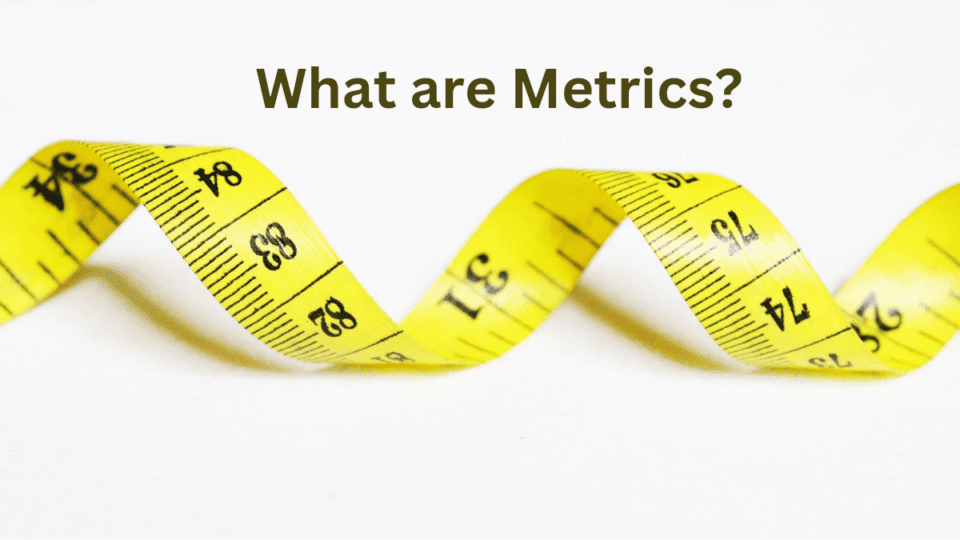Metrics is one of the important factors that helps businesses monitor and measure the performance and effectiveness of marketing and business activities. So What exactly are Metrics? Why is it necessary for businesses? What is the method to measure Metric? Let’s analyze with MarkKnow to find answers to the above questions.
What are Metrics? What is Marketing Metric?
What are Metrics? What is Marketing Metric? Let’s explain them together!
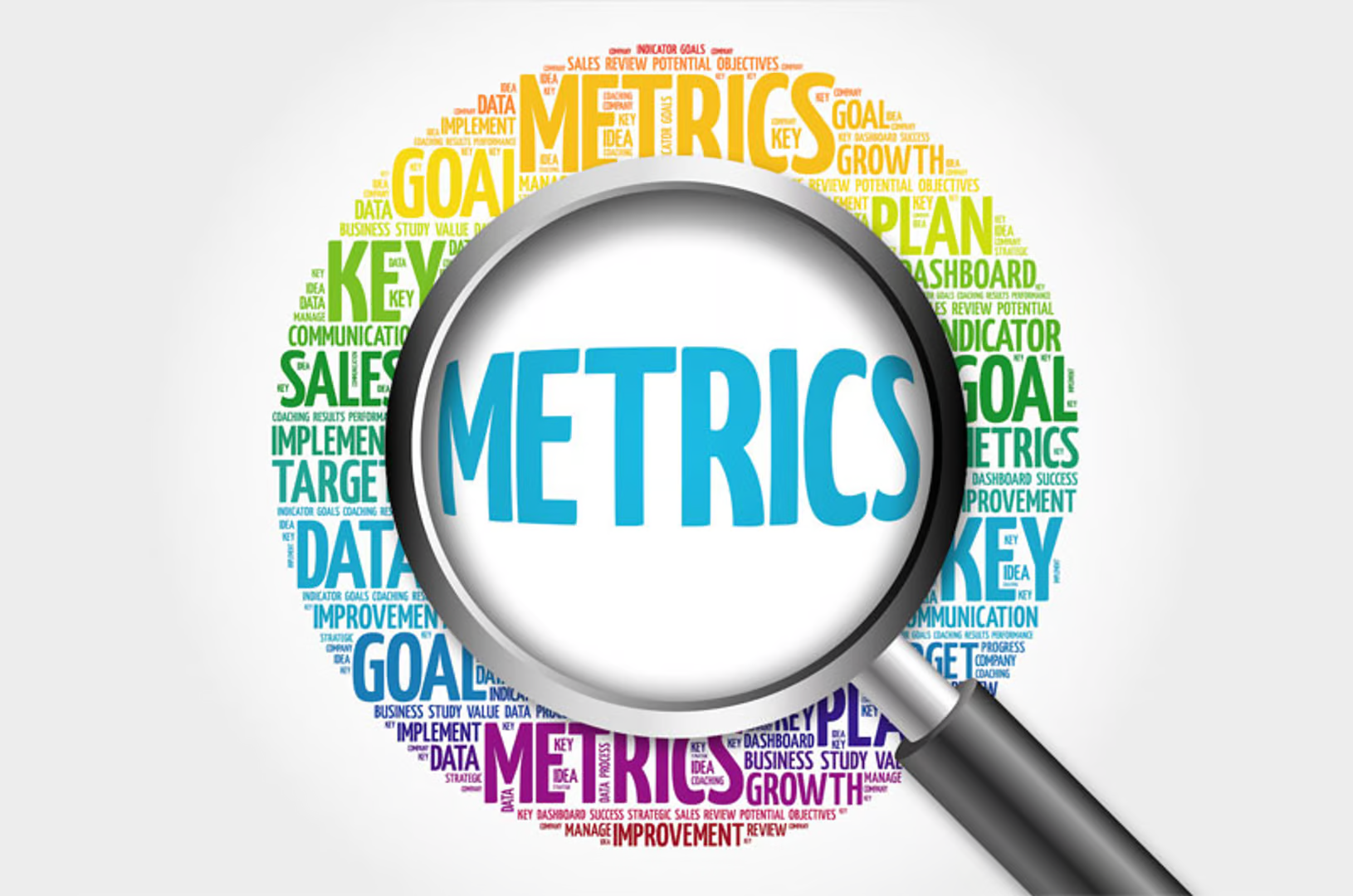
What are Metrics?
Metrics are quantitative indicators used to measure and track the results of an activity or process. They provide clear and comparable information about performance, helping businesses evaluate progress and achieve goals. Metrics are usually specific figures such as revenue, profit, conversion rate, marketing costs or any value that can be measured and calculated. They are important in making strategic decisions.
For example: Monthly revenue, number of new customers, investment costs, etc.
What is Marketing Metric?
Marketing Metrics are indicators used to measure the performance of marketing campaigns and activities. They help businesses track marketing results, evaluate the effectiveness of strategies, and adjust plans to optimize performance. These metrics can include factors such as conversion rate, click-through rate (CTR), customer acquisition cost (CAC), and return on investment (ROI) in marketing.
For example: Click-Through Rate (CTR) in online advertising, Email Open Rate in email Marketing, Return on Investment (ROI) of an advertising campaign.
The Role of Metrics in Marketing and Business
Nowadays, Metric plays a very important role in Marketing and business activities. Not only measuring performance, comparing results and improving operations, Metric also brings many other great benefits such as:
Demonstrating True Performance in Marketing
Metrics help measure and evaluate the effectiveness of marketing activities in real time. Indicators such as conversion rate, website traffic, cost per lead (CPL) or customer lifetime value (CLV) show the success of the campaign. By tracking these metrics, businesses can detect the strengths and weaknesses of the campaign, thereby adjusting strategies to optimize effectiveness.
Helps Make Strategic Decisions
Metrics provide a clear view of the overall performance of a marketing campaign, which is the basis for managers to make decisions. For example, if a campaign has a high ROI (Return on Investment), the business can decide to invest more in this strategy. Conversely, if the metrics show that the campaign is ineffective, the business can cut costs or adjust the approach to avoid wasting resources.
Effective Financial Control
Metrics help control costs and track the profitability of marketing campaigns. Indicators such as CPA (Cost per Acquisition) or ROAS (Return on Ad Spend) allow businesses to analyze the balance between costs and benefits, thereby managing budgets more effectively. Financial control through Metrics also helps businesses avoid wasting capital and invest in strategies with real value.

Ensure Activities Take Place On Schedule
Metrics track campaign progress in real-time and help detect any delays or issues that may occur during execution. For example, if a Digital Marketing Campaign fails to reach its traffic target after a week, Metrics will signal managers to review their strategy, change or adjust the campaign immediately. This ensures that activities are running as planned, without delaying business goals.
Helps Identify Customer and Market Needs
Metrics such as engagement rate, bounce rate, and customer feedback indicators help businesses better understand customer behavior and needs. For example, analyzing user behavior on websites or social networks allows businesses to determine what customers are interested in, their shopping trends, and factors that influence their purchasing decisions. As a result, businesses can optimize their outreach strategies and better meet the actual needs of the market.
Is The Basis For Setting Up, Calculating KPIs, Optimizing Campaigns
Metrics are an important foundation for setting up and evaluating KPIs (Key Performance Indicators). By tracking metrics such as traffic, conversion rates, and revenue, businesses can clearly define their marketing campaign goals and evaluate whether they have achieved their goals. Based on that, businesses can adjust their strategies to optimize performance, improve KPIs, and increase the overall effectiveness of the campaign.
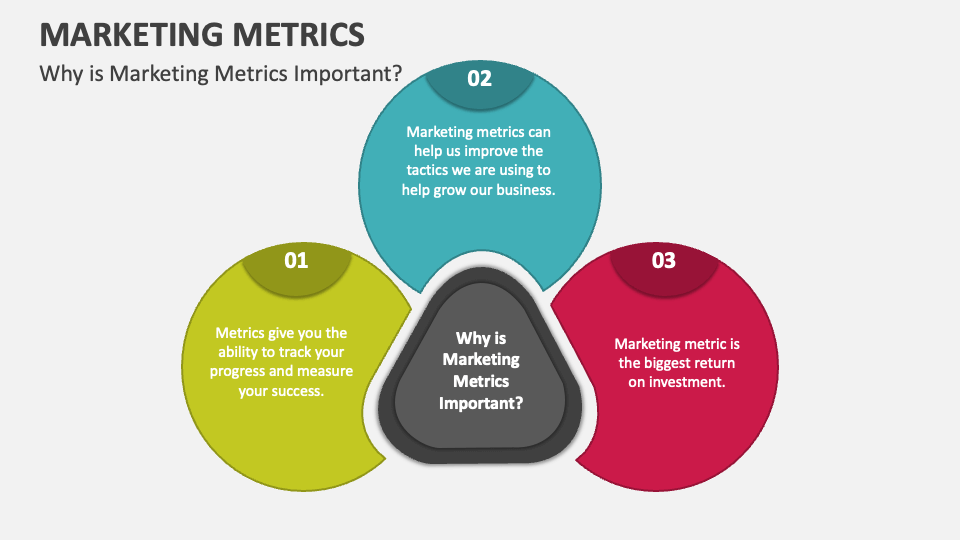
What Are The Important Metrics In Marketing?
In Marketing, there are many different types of Metrics that you need to understand to ensure the effectiveness of this activity. So what are those indicators?
ROI Index
ROI is one of the most important indicators to measure the effectiveness of marketing activities, showing the ratio of profit compared to the cost invested in the campaign. ROI helps businesses determine whether the campaign is profitable or not, thereby optimizing marketing spending. This indicator is often used to compare performance between different campaigns, evaluating which campaign is more profitable.
For example, you spend 100 million on a Marketing Campaign and achieve a revenue of 500 million. That means your ROI is 400%.
CPW Index
CPW measures the cost it takes to convert a potential customer into a paying customer. It is a good metric for measuring the cost of customer acquisition of a marketing campaign. The lower the number, the more effective the customer acquisition.
For example, a February 14th sales campaign on Facebook and Tiktok helps you get 200 orders. You spend 100 million on Facebook, 100 million on Tiktok, so the cost for each order is 1 million.
CR Index
Conversion Rate is the percentage of potential customers who perform a desired action after being exposed to an advertisement or marketing message. That action can be a purchase, registration, form filling, etc. The CR index will evaluate the effectiveness of content and marketing strategies. A high conversion rate shows that the content is attractive and effective in persuading customers to perform the desired action.
For example, if your campaign has 1000 visitors and you get 10 leads, the conversion rate is 1%.
CPL Index
This is a measure of the cost per lead. It focuses on the number of customers you get from your marketing campaign, but because it is part of the sales process, it cannot measure the quality of each lead. CPL helps businesses evaluate the cost of attracting potential customers. The lower this index, the more effective the campaign is in collecting customer information.
For example, still a sales campaign on February 14 on Facebook, Tiktok, you get 400 potential customers, the cost for each person is 500,000 VND.
IS Index
Impression Share is the ratio of the number of times your ad is shown compared to the total number of times it could be shown (based on budget and keyword competition). The IS index allows businesses to understand how competitive their ads are in the market. If IS is low, businesses may need to increase their budget or optimize their keywords to show more.
For example, if you sell 100 million in February, about 10% of the contribution comes from the advertising campaign running in January.
CLV Index
CLV is the total value that a customer brings to a business over their lifetime. It allows businesses to understand the long-term value that each customer brings, thereby optimizing customer retention strategies and maximizing this value.
For example, if a customer makes 4 purchases per year, each worth $100, and they stay with the brand for 3 years, the CLV is: CLV=100×4×3=$1,200
Purchase Funnel
Purchase Funnel is a marketing model that describes the customer journey from product awareness to purchase. This funnel has many stages: Awareness, Interest, Consideration, Intent and Purchase.
The sales funnel helps businesses track customer behavior at each stage and adjust marketing campaigns to speed up the conversion from leads to paying customers.
ROAS Index
ROAS is a measure of the profit earned from each dollar spent on advertising. This is an important indicator to evaluate the effectiveness of paid advertising campaigns. ROAS helps businesses optimize advertising spending and measure whether advertising campaigns are effective. A high ROAS means that the campaign generates a good profit compared to the cost incurred.
For example, if you spend $1,000 on advertising and earn $4,000 in revenue, your ROAS is: ROAS = 4000/1000 = 4.
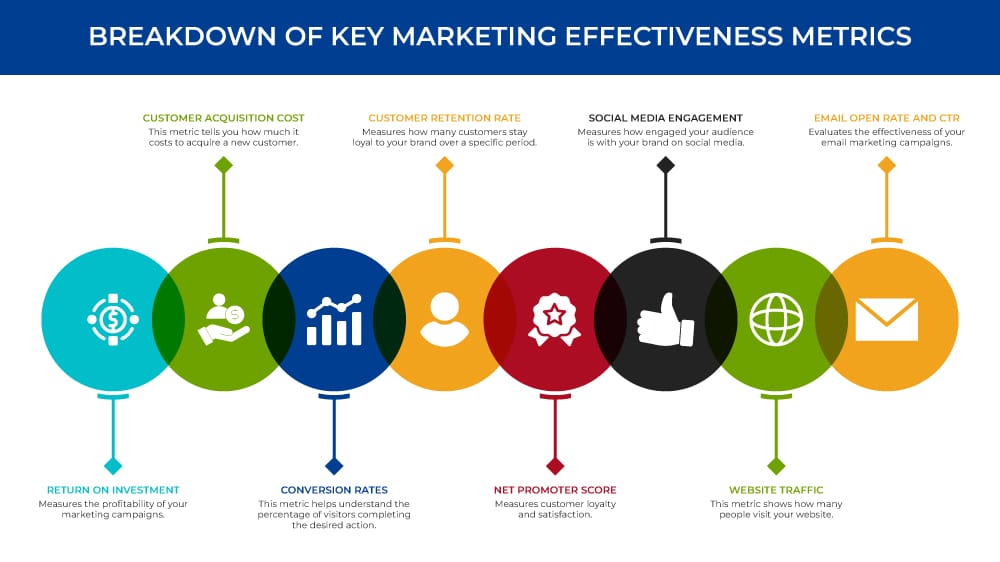
Common Metrics for Each Channel
Each Marketing channel has its own separate and important Metrics, helping businesses evaluate the effectiveness of each campaign and optimize appropriate Marketing strategies.
Facebook Ads
- CTR (Click-Through Rate): The percentage of people who view an ad and click on the link. This is an indicator of how attractive the ad content is.
- CPC (Cost Per Click): The cost per click on an ad. This metric measures the cost to attract users through clicks.
- CPM (Cost Per Thousand Impressions): Cost for every 1,000 ad impressions. CPM helps evaluate advertising effectiveness at the impression level.
- Conversion Rate: The rate of conversion from click to action such as purchase, registration. This is one of the most important Metrics to measure campaign performance.
- ROAS (Return on Ad Spend): Profit earned from the amount spent on advertising, helps evaluate the financial efficiency of the advertising campaign.
Social Media
- Engagement Rate: The ratio of user interactions with a post (likes, comments, shares) compared to the total number of people reached. This index evaluates the level of interaction of content on social networks.
- Reach: The number of people who have seen your content. This metric measures the reach of a post or campaign.
- Impressions: The number of times a piece of content is displayed, regardless of user interaction. This is a measure of how often the content appears.
- Follower Growth: The rate at which the number of followers on a social media site increases. This is an important metric to measure the expansion of reach.
- Mentions: The number of times your brand or hashtag is mentioned on social media. This metric measures brand awareness.
Email Marketing
- Open Rate: The percentage of emails opened compared to the total number of emails sent. This is an indicator of the subject line and attractiveness of the email.
- CTR (Click-Through Rate): The percentage of email recipients who click on a link in an email. This metric measures the level of engagement with the email content.
- Bounce Rate: The rate of emails that could not be sent successfully (due to incorrect email address, full mailbox, etc.). This is an indicator of the quality of the email list.
- Unsubscribe Rate: The percentage of users who unsubscribed from receiving emails. This metric helps assess the relevance of email content to recipients.
- Conversion Rate: The percentage of email recipients who perform the desired action (purchase, sign up for a service). This is the most important metric to measure the effectiveness of an email campaign.
Website
- Traffic: Number of visits to a website, including traffic sources from search, social networks, email, or direct. This metric measures the popularity of a website.
- Bounce Rate: The percentage of users who leave a website after viewing a page without interacting further. This metric helps evaluate user experience and website content.
- Average Session Duration: The average time a user spends on a website. This metric measures how engaging and useful the website content is.
- Pageviews: The total number of times a website’s pages have been viewed. This is a measure of how interested users are in a particular page.
- Conversion Rate: The percentage of users who complete a goal on the website (purchase, fill out a contact form, etc.). This is the main indicator to evaluate the business performance of the website.
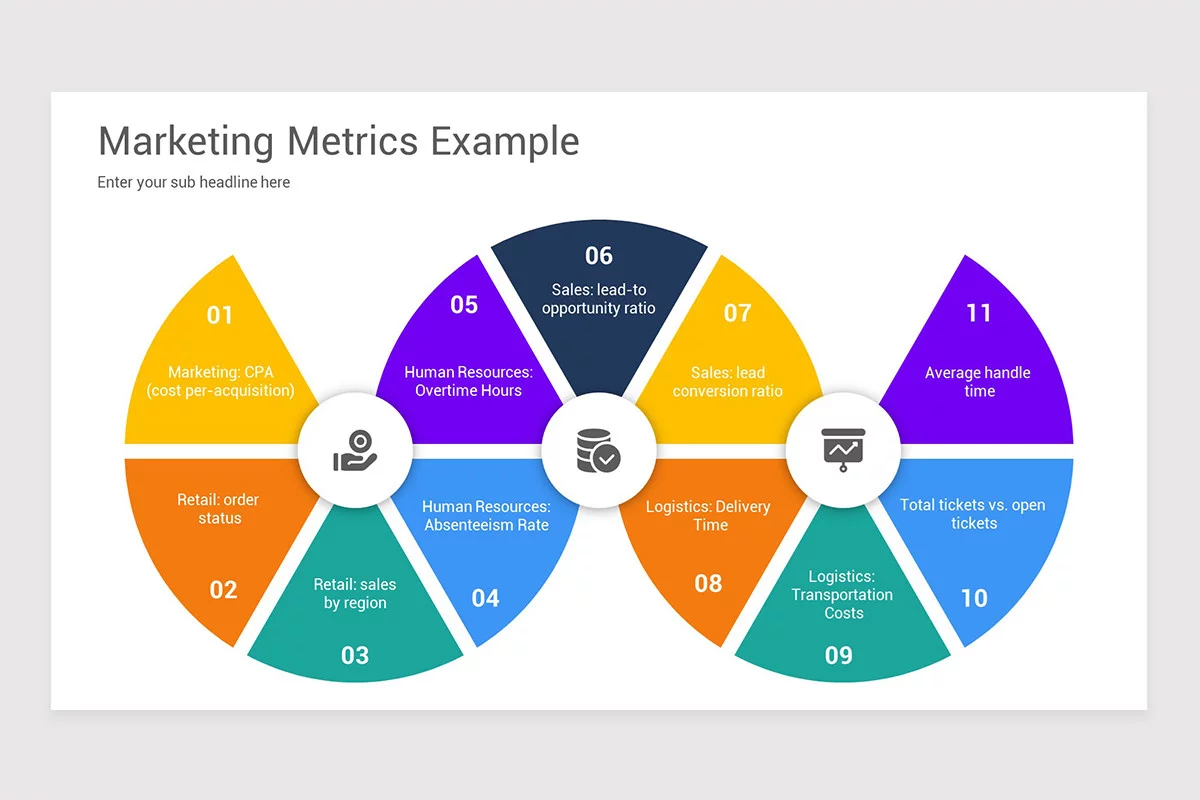
KPIs vs Metrics
Currently, in Marketing or business activities, there are many different indicators. Therefore, many people often confuse and cannot distinguish between them, especially between Metric and KPI.
| Comparison criteria | Metric | KPI |
| Concept | Are different data points, which are the basis for building KPIs. | Is the business goal, performance result that the group, department, business wants to achieve. KPI can have many different indicators. |
| Time | No time limit. | Give a specific time frame to achieve the goal. |
| Related factors | Includes many different factors, as long as they are related to the business. For example, advertising reach, number of products sold, SEO keyword rankings, etc. | Directly related to how businesses make money such as revenue, profit, costs, ROI, CPA, CPL, number of leads, etc. |
| The Relationship Between Metrics and KPIs | Not every Metric is a KPI. | KPI is a type of Metric. |
Effective Metric and KPI Measurement Methods for Businesses
In the process of implementing Marketing and business campaigns, businesses will need to regularly monitor and measure Metrics and KPIs to ensure the fastest grasp of problems, thereby providing appropriate improvement methods. So what is the way to effectively measure these indicators?
Determine KPIs for Each Channel
KPI (Key Performance Indicator) are important indicators that help evaluate the performance of each channel in the business. Businesses may have to carefully research and study competitors and the performance they achieve. From there, businesses need to identify and build a specific and clear KPI system. Each channel needs to have its own KPI to measure success, for example:
- Marketing Channels: KPIs can include website traffic, click-through rate (CTR), conversion rate from leads to actual customers.
- Sales Channel: KPIs can be monthly revenue, number of orders, customer return rate.
- Customer Service Channels: KPIs like request resolution time, customer satisfaction (CSAT), response rate can be important metrics.
This also makes the monitoring and measurement process easier and more effective.
Provide the Necessary Indicators for KPI
There are many different indicators that help build KPIs and businesses will need to identify them to set the appropriate indicators. Choosing the right KPI indicators based on the strategic goals of the business will help you monitor and evaluate performance accurately and effectively, thereby making appropriate adjustments to achieve the set goals.
Example for KPI “Online Channel Revenue”:
- Number of Orders: shows the total number of orders that have been made in a given period of time.
- Average Order Value (AOV): will help understand the average customer spend per purchase, thereby assessing the attractiveness of the product.
- Customer Retention Rate: indicates the ability to keep customers coming back to make purchases, indicating customer satisfaction and loyalty to the brand.
Track Metrics Using Dashboard
Tracking KPIs with dashboards helps businesses have a clearer, more comprehensive view of performance. Dashboards can integrate many types of data from different sources, allowing managers to easily monitor business performance in real time.
Dashboards not only help visualize data but also allow users to customize charts and reports according to their own needs. Tools like Google Data Studio or Tableau provide a friendly interface, allowing team members to easily grasp information without too much knowledge of data analysis. By displaying KPI indicators on a dashboard, businesses can quickly detect problems, such as declining revenue or low conversion rates, thereby making timely decisions to improve strategies and optimize workflows.
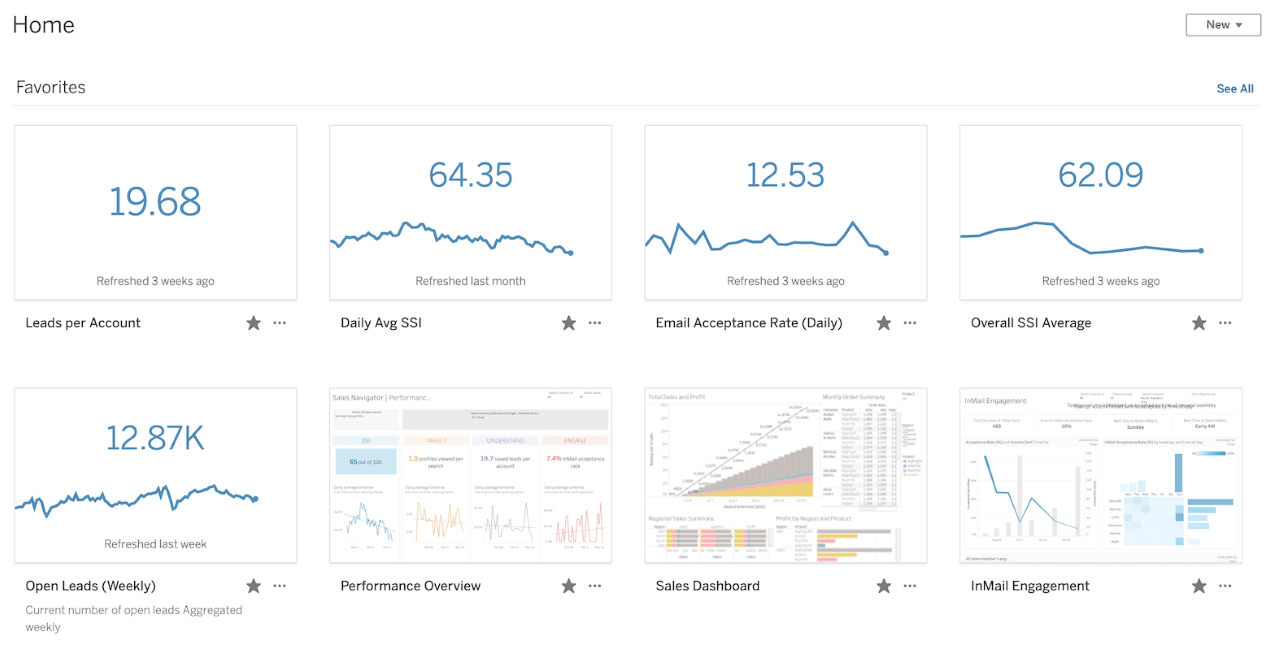
Identify Reasons Why KPIs Were Achieved/Not Achieved
Regardless of whether the results are good or bad, KPIs are guaranteed or not, businesses need to identify the causes and influencing factors such as:
- Changes in the Market: Customer needs can change, affecting revenue.
- Ineffective Marketing Campaign: If the conversion rate is low, the business needs to review the Marketing strategies it has implemented.
- Customer Service: If satisfaction rates are dropping, businesses need to analyze their customer support processes for improvement.
This helps businesses come up with ways to continue to develop or improve existing problems.
Using Ratios to Measure KPIs
Using ratios to measure KPIs not only provides accurate information about performance but also helps businesses easily compare and evaluate the success of campaigns over time, allowing businesses to optimize their marketing and business strategies. From there, businesses can clearly understand whether the results of the campaign are really good and valuable or not.
Specifically:
- Conversion Rate: Calculated by the number of customers who perform the desired action (purchase, registration) divided by the number of potential customers. A high rate indicates an effective marketing campaign.
- Customer Retention Rate: Calculated by dividing the number of returning customers by the total number of initial customers over a period of time. A high rate indicates that customers are satisfied with the product/service.
- ROI (Return on Investment) Ratio: Calculated by dividing the profit earned from an investment by the cost of that investment, helps evaluate the effectiveness of campaigns and investments.
Hopefully the above article of MarkKnow has helped you understand ” What are Metrics ?” and the issues surrounding this concept. If you are working in the field of Marketing and business, apply the above methods immediately to achieve effectiveness in the process of implementing campaigns.
Frequently Asked Questions
What is Business Metric?
Business Metric is the health index of a business. Business Metric includes indicators related to revenue, customers, employees, etc.
What is Vanity Metric?
Vanity Metric means virtual index. These indexes can help businesses polish their brand on social media channels, but they do not bring much meaning or value.
What is the difference between Metric and Dimension?
Metric is a quantitative index, while Dimension is an attribute that classifies data.
What are Metric Tons?
Metric Tons is a unit of mass equal to 1,000 kg.
What Are Key Metrics?
Key Metrics are important indicators that help evaluate the performance and success of business operations.
Comment Policy: We truly value your comments and appreciate the time you take to share your thoughts and feedback with us.
Note: Comments that are identified as spam or purely promotional will be removed.
To enhance your commenting experience, consider creating a Gravatar account. By adding an avatar and using the same e-mail here, your comments will feature a unique and recognizable avatar, making it easier for other members to identify you.
Please use a valid e-mail address so you can receive notifications when your comments receive replies.
